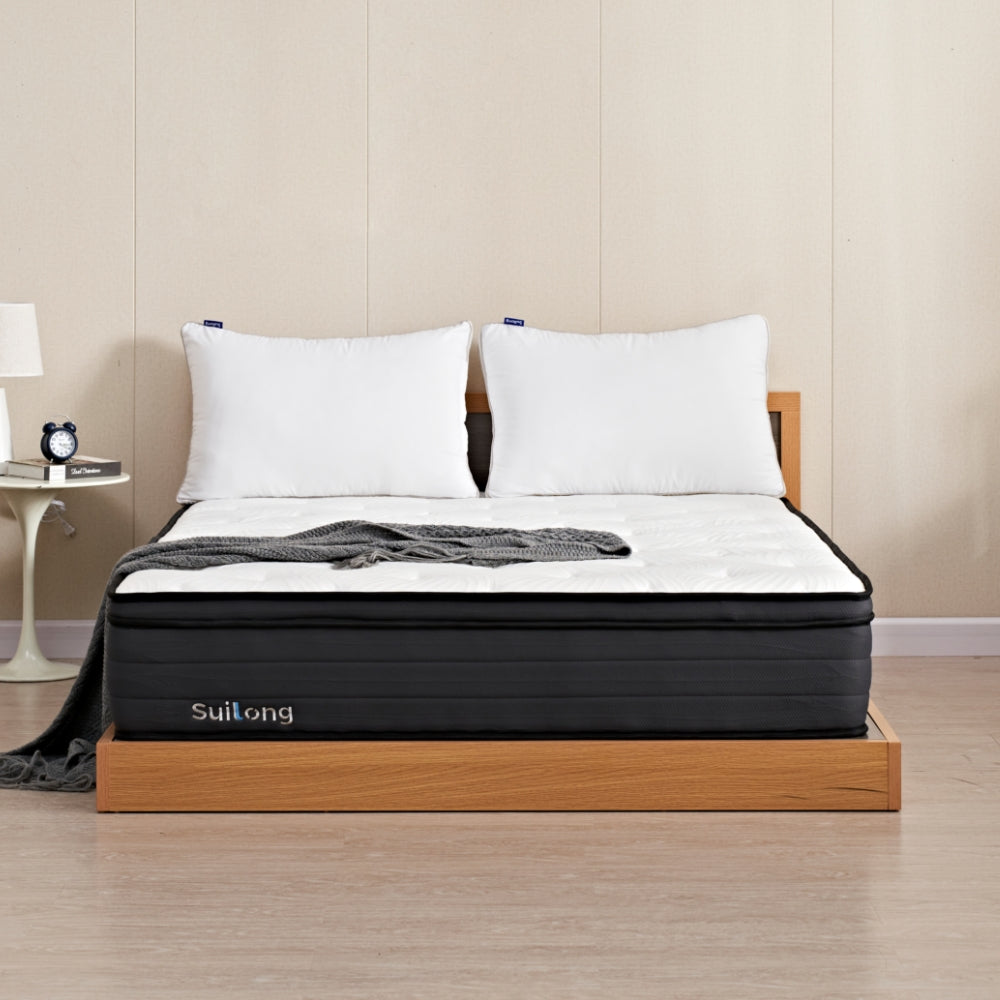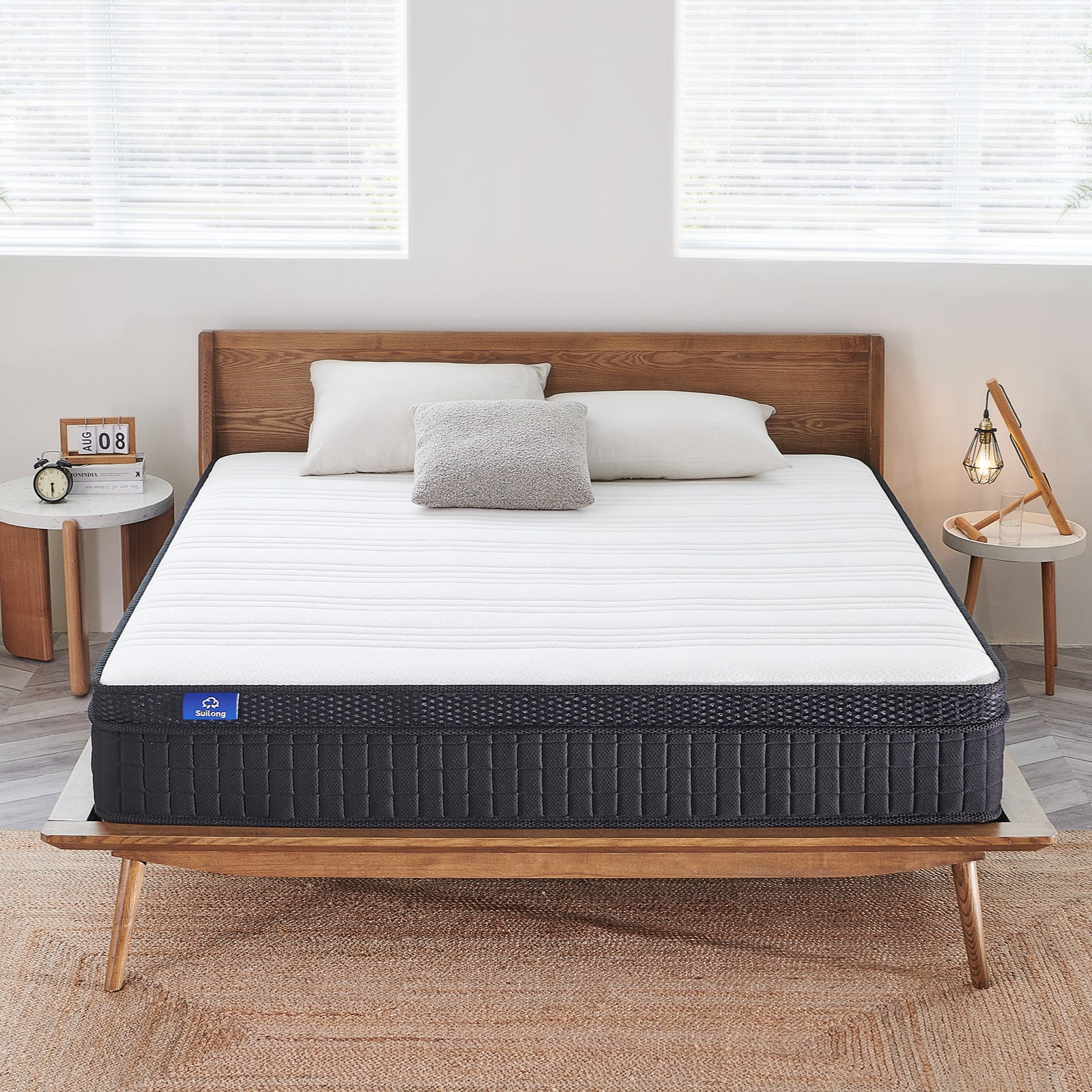How to Choose a Kids Mattress

Discover the ideal mattress for your child with our comprehensive guide. Explore tips on size, material, firmness, and safety for the perfect sleep solution.
1. Understanding the basic requirements of children's mattresses
Choosing the right mattress is crucial in order to ensure the healthy growth of your child. Parents need to consider the size, material, and whether it adapts to their child's growth when purchasing a mattress.
Choosing the Size of a Children's Mattress
Size is an important consideration when choosing a children's mattress. For most families, a kids twin mattress is usually the best choice because it saves space and is large enough for a child to use for many years. As the child grows into a teenager, this size mattress will still meet their needs. Additionally, choosing the right size mattress will help ensure that the mattress matches the bed frame perfectly, providing your child with a firm and safe sleeping environment.
Safety and Material Standards
With children's mattresses, safety always comes first. Choosing a mattress that meets CertiPUR-US or other international certification standards ensures that the mattress does not contain harmful chemicals. These types of materials are good for children's health and also have less of an impact on the environment. To ensure mattress safety, parents should choose products that have been rigorously tested and labeled as free of harmful substances.
Designs that adapt to children's growth
A child's body is constantly changing as it grows, so it's critical to choose a mattress that adapts to these changes. For example, some mattresses are designed with adjustable firmness or offer dual-sided options with different firmnesses, allowing parents to adjust to their child's growth and sleeping habits. Such designs not only provide long-term value, but also ensure that the support of the mattress is adjusted as your child's body grows.
Next, we'll look at how choosing the right mattress firmness for your child is crucial to guaranteeing their quality of sleep.
2. Choosing the right firmness for your child's mattress
Mattress firmness has a direct impact on your child's sleep quality and health, so choosing the right mattress firmness is crucial.
Understanding the impact of mattress firmness on children
The firmness of a child's mattress needs to be determined based on the child's age, weight and preference. In general, softer mattresses are appropriate for younger children because they provide enough support while being soft enough to accommodate a child's growing body. For children who are heavier or more active sleepers, medium-firm mattresses may be more appropriate because they provide better support and prevent the body from sinking too deeply.
How to Test Mattress Firmness
When buying a mattress at a brick-and-mortar store, have your child lie on the mattress for a few minutes and observe if their spine stays naturally straight and if their body is evenly supported. If buying online, choose mattress brands that offer a trial period so you can actually use the mattress at home for a period of time to make sure the firmness is right for your child.
Firmness and your child's sleep quality
The firmness of a mattress not only affects your child's comfort, but also the quality of their sleep. A mattress that suits your child's body can provide a good night's rest and contribute to your child's healthy growth. The right firmness can reduce the number of times your child rolls over at night and reduce the feeling of being pressed down, thus promoting deep sleep.
Next, we'll delve into the different types of children's mattresses and their features to help you better understand the various options on the market.
3. Types of children's mattresses and their features
Understanding the different types of children's mattresses and their features can help parents make a more informed choice and ensure that the mattress meets their child's specific needs.
Advantages and Disadvantages of Memory Foam Mattresses
Memory foam mattresses are popular for their unique pressure-releasing properties, which provide personalized support by adjusting their shape to your child's body type and sleeping position. This material is especially good for children who need extra spinal support. However, the downside of memory foam is that it can retain body heat, leading to overheating during sleep. For this reason, parents can opt for a memory foam mattress with a gel layer to improve breathability and temperature regulation.
Suitability of spring mattresses
Spring mattresses are known for their superior breathability and elasticity for kids who are hot sleepers and active. These mattresses usually provide even support and help maintain the natural curve of your child's spine. However, spring mattresses may not be as good as memory foam mattresses at minimizing vibration when turning, a factor parents need to consider when making their choice.
Properties of Hybrid Mattresses
Hybrid mattresses combine the benefits of memory foam and innerspring mattresses to provide a sleep experience that is both supportive and comfortable. These mattresses typically use memory foam in the top layer and springs in the bottom layer, providing good breathability while conforming to the shape of your child's body. Hybrid mattresses are a well-rounded option, especially for families who require a more demanding sleep environment.
Next, we'll explore some mattress options for special needs, including factors such as allergy concerns, different sleeping positions, and long-term durability, to help you find the best mattress for your child.
4. Special Needs Mattress Options
Choosing the right mattress for your child's special needs can significantly improve their sleep quality and comfort.
Mattress Choices for Children with Allergies
For children with allergies, choosing an anti-allergy mattress is crucial. These mattresses are often made with special anti-mite and anti-microbial materials that reduce the buildup of allergens. In addition, a mattress top that is easy to clean and maintain helps keep the sleeping environment clean and healthy.
Mattress choices for kids with different sleeping positions
A child's sleeping position is also an important factor to consider when choosing a mattress. For example, a child who sleeps on his or her side may need a softer mattress to relieve pressure on the hips and shoulders, while a child who sleeps on his or her back or on his or her stomach may be better suited to a medium-firm mattress for better support.
Long-term durability and adjustability of the mattress
As children grow, their sleep needs may change. Therefore, choosing a mattress that is durable and adjustable over time is a wise investment. An adjustable mattress can provide long-term value by adjusting the firmness or comfort level as your child grows and changes.
Next, I'll go over how to select and purchase a children's mattress, including the pros and cons of buying online and in a brick-and-mortar store, budget considerations, and common buying mistakes to help you make the best choice.
5. How to pick and buy a kids mattress
When selecting a children's mattress, it is vital to choose the right mattress for your child's health and comfort, taking into account their special needs and stage of development. Meanwhile, when introducing different mattress options, we will compare them with the features of Suilong mattresses to provide you with comprehensive information.
Pros and Cons of Buying Online vs. Buying in a Brick-and-Mortar Store
Buying a mattress online offers convenience and a wide range of choices, while buying in a brick-and-mortar store allows you to experience the product in person. For example, Suilong's Utopia 11 Inch Hybrid Mattress is a child-friendly option that combines the benefits of memory foam and springs to provide comfort and support. You can browse Suilong's product details online or experience the comfort for yourself in a physical store.

Suilong Utopia
11 Inch Hybrid Mattress
Look no further than the Suilong Utopia 11 Inch Hybrid Mattress.
Buy NowBudget and Value for Money Considerations
When considering budget and value for money, you need to weigh up the quality of the mattress against the cost, Suilong mattresses are known for their high quality and reasonable price, offering a wide range of sizes and types to choose from. Compared to other brands on the market such as Purple, Leesa, and Casper, Suilong offers mattresses that are both quality constructed and competitively priced, making Suilong a cost-effective option.
Common Buying Mistakes and How to Avoid Them
Avoid falling into misconceptions when buying a children's mattress, such as making a decision based on price or brand alone. Parents should choose a mattress based on their child's specific needs. For example, Suilong's "Utopia" mattress is suitable for children with a wide range of sleep types, and is an excellent choice for a combination of comfort and support. It's also important to compare the features of different brands so you can make the best choice for your child.
When choosing a children's mattress, we recommend that you consider your child's needs, your family's budget, and the quality of the mattress. suilong mattresses offer a wide range of choices for your child, with their innovative design, excellent materials, and comfort. Of course, the choice is ultimately yours and we aim to provide you with comprehensive information to help you make the best decision.
Read more:
https://suilong.org/blogs/blogs/what-type-of-mattress-is-best-for-belly-sleepers
https://suilong.org/blogs/blogs/what-type-of-mattress-is-best-for-obese-person
https://suilong.org/blogs/blogs/what-type-of-mattress-should-a-side-sleeper-use
https://suilong.org/blogs/blogs/best-mattress-for-heavy-people-2023
https://suilong.org/blogs/blogs/best-mattresses-for-side-sleepers-according-to-experts
https://suilong.org/blogs/blogs/what-is-the-best-mattress-for-hot-sleepers
https://suilong.org/blogs/blogs/what-type-of-mattress-is-best-for-a-side-sleeper
FAQs
Q1: How do I determine the right size mattress for my child?
A1: Consider the age and size of your child. A twin mattress is often ideal for children, offering ample space for growth. Ensure the mattress fits snugly in the bed frame for safety.
Q2: What type of mattress material is safest for children?
A2: Look for mattresses made from hypoallergenic and non-toxic materials. CertiPUR-US certified foam, for example, is free from harmful chemicals and is a safe choice.
Q3: Should I choose a soft or firm mattress for my child?
A3: This depends on your child's preference and weight. Younger children might benefit from a softer mattress, while older children may require firmer support to aid proper spine alignment.
Q4: Are memory foam mattresses suitable for children?
A4: Yes, memory foam mattresses can be suitable, particularly those that are medium-firm and designed to support growing bodies. However, ensure good temperature regulation to avoid overheating.
Q5: What are the benefits of a hybrid mattress for children?
A5: Hybrid mattresses offer a combination of support and comfort. The innerspring provides support, while the foam layers offer comfort and contouring, suitable for various sleeping positions.
Q6: How can I test the firmness of a mattress before buying?
A6: If shopping in-store, have your child lie on the mattress to check for comfort and support. If buying online, look for brands offering a trial period to test the mattress at home.
Q7: Are there specific mattresses for children with allergies?
A7: Yes, hypoallergenic mattresses are available and are designed to reduce allergens. These mattresses often feature materials that deter dust mites and mould.
Q8: Can the mattress firmness affect my child’s sleep quality?
A8: Certainly. The right firmness can reduce tossing and turning, ensuring a more restful sleep. It's important to find a balance that provides both comfort and support.
Q9: How do I ensure the longevity of a child’s mattress?
A9: Choose a durable mattress with a washable cover. Rotate and flip the mattress regularly if it's double-sided. Waterproof mattress protectors can also extend the mattress's life.
Q10: What should I consider when comparing mattress brands for children?
A10: Compare based on the mattress’s material quality, comfort, support, durability, and safety certifications. Also, consider customer reviews and the brand's reputation for reliability.


















